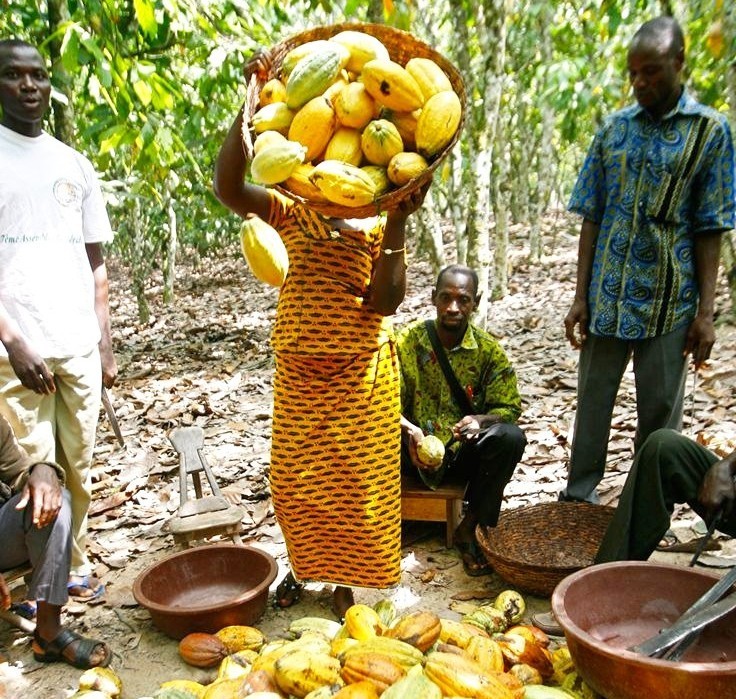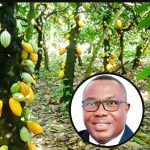
Numerous Ghanaian cocoa farmers are closing their operations for a variety of interrelated reasons, including economic, environmental, and social challenges. In fact, the main causes influencing their decisions are that the farmers put in a lot of effort for little pay, among other things.
Low Income and Inadequate Compensation: Many cocoa farmers earn less than a living income, with up to 90% surviving on less than $2 a day, according to Oxfam.
The Ghana Cocoa Board (COCOBOD) sets prices that often fail to cover production costs or reflect global market prices, which reached $12,000 per tonne in December 2024, while farmers received only GH¢3,000 per 64kg bag. This discrepancy pushes farmers to abandon cocoa for more profitable ventures like rubber plantations or poultry farming.
Impact of Illegal Mining (Galamsey): Illegal small-scale mining, known as galamsey, has destroyed over 30,000 hectares of cocoa farms by December 2024, with another 50,000 hectares at risk. Farmers, facing declining incomes (down 16% since 2020), lease or sell their land to galamsey operators for immediate financial relief. Galamsey also degrades soil, pollutes water sources, and alters microclimates needed for cocoa growth.
Cocoa Swollen Shoot Disease (CSSD): The cacao swollen shoot disease affects 25.7% of Ghana’s 1.94 million hectares of cocoa farmland, causing 15–50% harvest losses annually. The National Cocoa Rehabilitation Program requires cutting down infected trees and replanting with disease-tolerant varieties, but some farmers resist due to the two-year replanting process and lack of immediate income. This leads to deliberate tree removal to shift to other crops or activities.
Climate Change and Environmental Challenges: Erratic rainfall, rising temperatures, and pests like black pod disease, exacerbated by climate change, have reduced cocoa yields. For instance, Ghana’s cocoa output dropped to 429,323 metric tons in 2024, less than 55% of average production. Some farmers report declining harvests due to unpredictable weather and ineffective pesticides, prompting some to switch to more resilient crops.
Shift to Alternative Crops or Land Use: In regions like Amenfi West, farmers are converting cocoa farms to rubber plantations, which offer quicker returns and less vulnerability to disease and market fluctuations. Others sell land to private investors for non-agricultural uses, such as poultry farming, to escape the financial strain of cocoa farming.
Aging Farms and Farmers: Many cocoa farms and farmers (averaging over 55 years old) are aging, leading to lower productivity. Younger generations are reluctant to continue cocoa farming due to its low profitability and high labor demands, pushing farmers to abandon or repurpose their land.
Smuggling and Market Restrictions: The controlled market system, where COCOBOD is the sole buyer, limits farmers’ ability to benefit from high global prices. This incentivizes smuggling cocoa to neighboring countries for better prices, reducing local production and encouraging farmers to abandon cocoa farming altogether.
Cocoa Farmers Disappointed: Why New Prices Don’t Match Their Hopes
These factors contribute to a cycle of desperation and poverty, which drives farmers to cut down their cocoa farms in search of more stable or immediate sources of revenue. Farmers contend that despite the government’s and COCOBOD’s introduction of programs like improved seedlings and anti-galamsey campaigns, these measures are not enough to meet their urgent demands.
Speaking in a vox pop, the farmers claimed that the current government had promised them a satisfactory price for cocoa, but their expectations had not been fulfilled. They argue that, since successive governments have let them down in numerous ways, their laborious efforts are worthless, and as a result, they are powerless, thus the need to take action that will benefit them.





